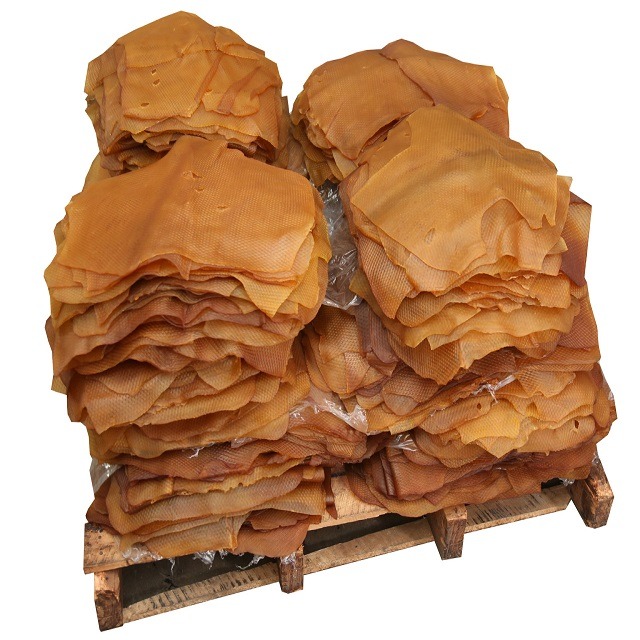Ribbed smoked sheet is one of rubber products that is derived from the latex sap of Hevea brasiliensis. It is processed mechanically and chemically by drying unsmoked sheets using a smokehouse. There are 5 grades of RSS, which are RSS 1, RSS 2, RSS 3, RSS 4, and RSS 5. These grades are based on the air bubble content in the sheet.
1. Dilution
Rubber latex from plantation is diluted by water to filter out the impurities and to homogenize the dry rubber content. The dilution is carried out until the dry rubber content reaches 12-15%. The latex is then filtered using an aluminium filter.
2. Coagulation
Latex is then coagulated using a coagulation agent such as formic acid or acetic acid. The latex will be coagulated at pH of 4.5 - 4.7.
3. Miling
After the coagulation process, latex is then milled to remove the water content using roller mills. This process produces a thin sheet with ribbed patterns on it. After that, the thin sheet is washed with clean water to remove chemicals and dirt. The thin sheet is then hung in an open space for about 1-2 hours to reduce the water content.
4. Smoking
The sheet is smoked to reduce the water content, inhibit the growth of mold, and give a characteristic brown color to it. Smoking can inhibit the growth of mold due to its antiseptic substances that can prevent the growth of microorganisms.
1. General engineering:
In general engineering, RSS can be used as a raw material for conveyor belt and rubber pipes.
2. Tires:
RSS is mainly used for automotive tires, especially radial tires.
3. Consumer goods:
RSS is also used for consumer goods, for example shoes.
